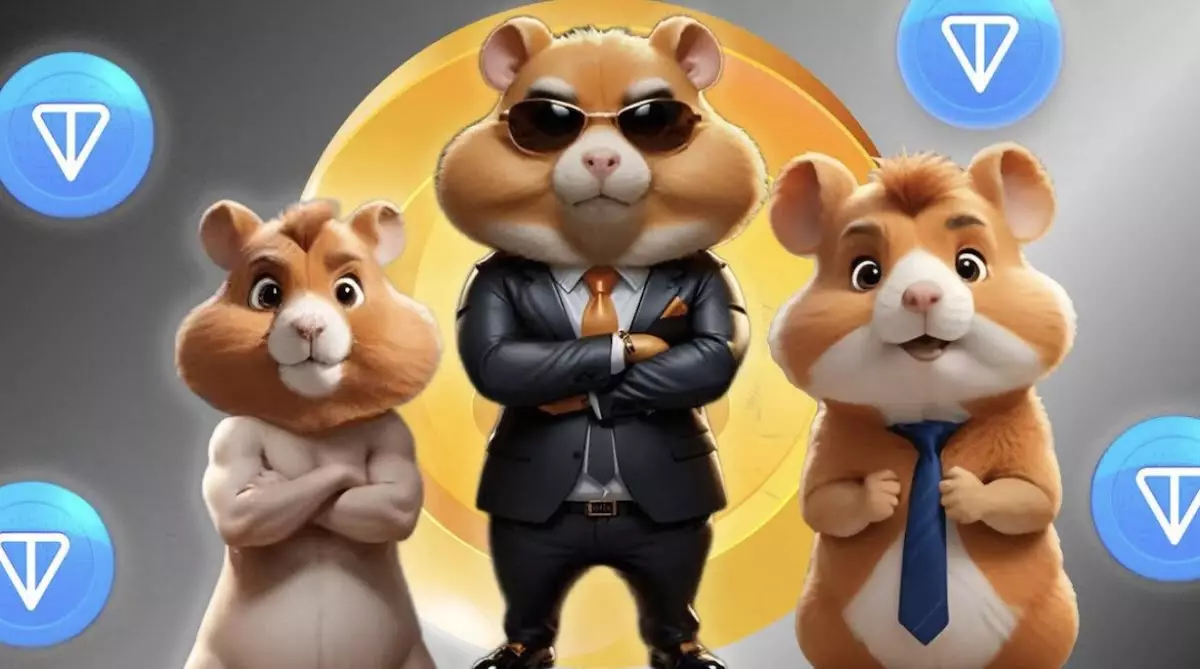Hamster Kombat, a clicker game gaining traction on Telegram, has unveiled an ambitious development roadmap that projects into 2025. This strategy is not merely about traditional game expansions; it aims to incorporate non-fungible tokens (NFTs) as in-game assets, construct a Web3 gaming platform, and build a unique token economy. The implications of these initiatives are substantial, potentially reshaping gaming interactions and the blockchain landscape as a whole.
The commitment to include NFTs is particularly transformative. By allowing players to own and trade game assets, the developers intend to create a vibrant marketplace that will revolutionize how individuals engage with the game. This ownership model stands in stark contrast to conventional gaming, where players often do not have true ownership of in-game items. Players will have the opportunity to monetize their achievements through these digital assets, thereby increasing engagement and investment in the game.
Not only does Hamster Kombat plan to enhance player ownership through NFTs, but it also aims to foster competitiveness among its players. Upcoming plans for clan championships promise to introduce a layer of competition that could attract a diverse group of players and collectors. The competitive framework could encourage team play and foster camaraderie, potentially leading to a more dynamic gaming experience.
By integrating these elements, the developers are not just envisioning an idle clicker game; they are positioning Hamster Kombat as a cornerstone for a larger ecosystem within the gaming industry. The ambition lies not only in entertaining players but also in setting a precedent for what Web3 gaming can achieve.
The most intriguing aspect of Hamster Kombat’s development roadmap is the conceptualization of a comprehensive Web3 gaming platform. The game’s creators perceive Hamster Kombat as a vital piece in a broader puzzle of decentralized gaming. They aim to merge the user-friendly attributes of Web2 with the transparent, community-oriented nature of Web3, which could redefine the gaming experience for many.
A significant part of this platform will be the introduction of a distinct token economy, focusing on a buyback strategy to maintain value. By using profits generated from advertising networks to buy back and subsequently burn the HMSTR tokens, the developers hope to create a deflationary environment that fosters scarcity and boosts market value. However, opinions vary regarding the viability of such strategies. While some analysts remain optimistic, others caution against potential pitfalls, reflecting the uncertainty inherent in emerging crypto markets.
Recently, Hamster Kombat executed an anticipated airdrop of its HMSTR tokens, designed to reward loyal players. However, the results sparked a wave of mixed reactions among the community. Out of the 300 million players that have engaged with the game since its launch, only 131 million qualified for token distribution. An unsettling discovery revealed that approximately 2.3 million users were excluded due to suspected cheating, further complicating player sentiment.
The market’s immediate response to the airdrop was less than favorable, with HMSTR’s value plummeting considerably. Initial prices fell sharply on launch day, reflecting the volatility and uncertainty surrounding the token’s perceived value. This downturn drew scrutiny from players, many of whom felt that the airdrop did not meet their expectations, resulting in disappointment rather than celebration.
Despite the setbacks, the Hamster Kombat team remains optimistic about the future. Plans for a second season and the introduction of additional games within their ecosystem indicate a commitment to revitalizing interest in the project. The roadmap outlines several key milestones that could serve to define not just the future of Hamster Kombat but also the wider landscape of blockchain gaming on Telegram.
The anticipated launch of an NFT marketplace and the expansion of the game’s ecosystem illustrate a vision that prioritizes player involvement and economic participation. This strategy could draw attention not merely to gameplay but also to the creation of an inclusive and player-driven economy, a hallmark of the emerging Web3 paradigm.
As one of the pioneering games on Telegram, Hamster Kombat has the potential to serve as a benchmark for future blockchain titles, balancing gameplay with sustainable tokenomics and heightened player engagement. The coming months will be critical in determining whether the strategies regarding NFTs, token buybacks, and community development successfully translate into the sustained interest and economic viability that both developers and players desire.
Ultimately, the road ahead is both exciting and fraught with challenges. The gaming community is eager to see if Hamster Kombat will rise to the occasion or falter under the weight of its lofty ambitions. Regardless of the outcome, it stands as a testament to the evolving landscape of blockchain gaming, where creativity, ownership, and community intertwine to shape the next generation of interactive entertainment.

